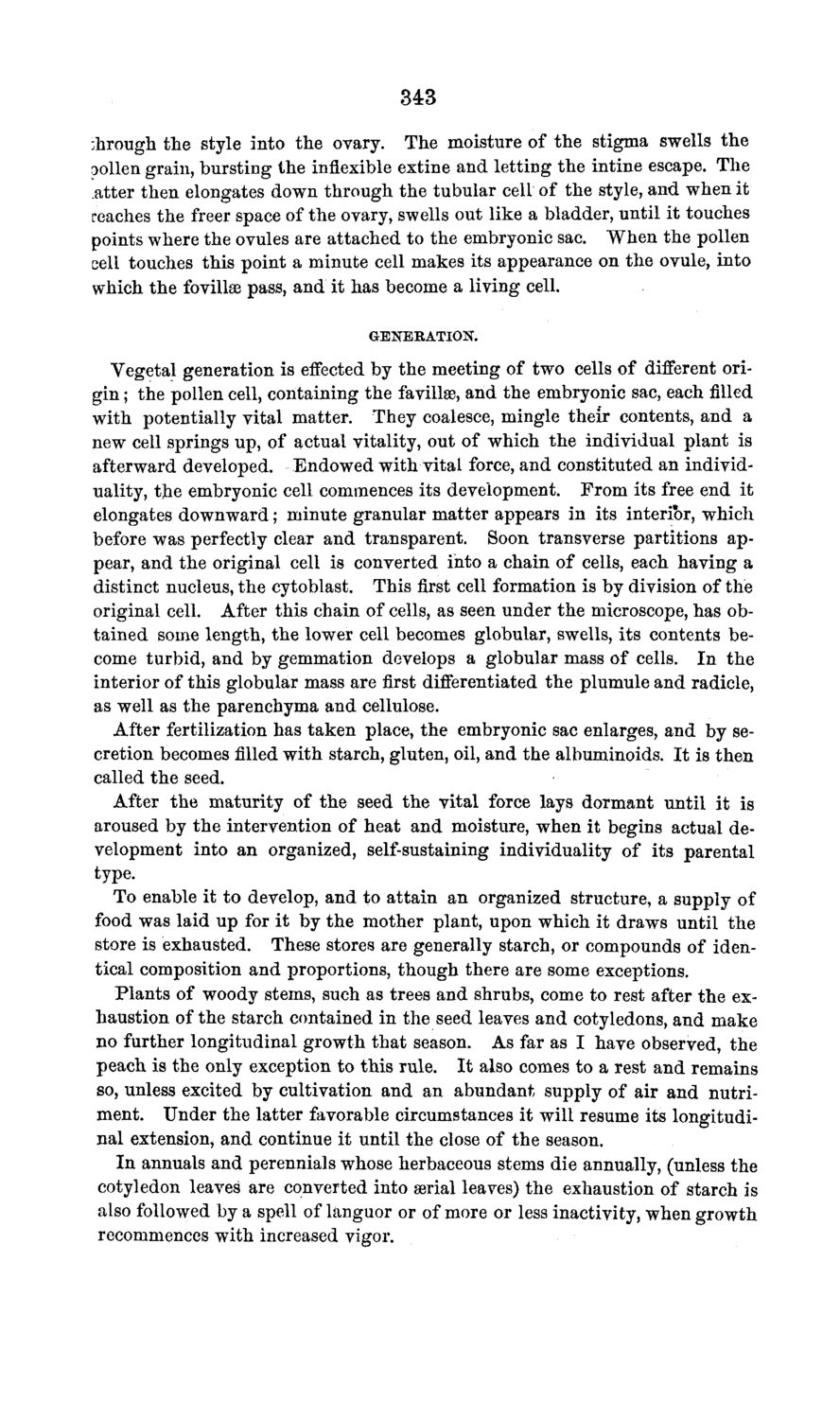| |
| |
Caption: Board of Trustees Minutes - 1869
This is a reduced-resolution page image for fast online browsing.

EXTRACTED TEXT FROM PAGE:
343 ;hrough the style into the ovary. The moisture of the stigma swells the pollen grain, bursting the inflexible extine and letting the intine escape. The atter then elongates down through the tubular cell of the style, and when it reaches the freer space of the ovary, swells out like a bladder, until it touches points where the ovules are attached to the embryonic sac. When the pollen cell touches this point a minute cell makes its appearance on the ovule, into which the fovillae pass, and it has become a living cell. GENERATION. Vegetal generation is effected by the meeting of two cells of different origin ; the pollen cell, containing the fa villas, and the embryonic sac, each filled with potentially vital matter. They coalesce, mingle their contents, and a new cell springs up, of actual vitality, out of which the individual plant is afterward developed. Endowed with vital force, and constituted an individuality, the embryonic cell commences its development. From its free end it elongates downward; minute granular matter appears in its interib-r, which before was perfectly clear and transparent. Soon transverse partitions appear, and the original cell is converted into a chain of cells, each having a distinct nucleus, the cytoblast. This first cell formation is by division of the original cell. After this chain of cells, as seen under the microscope, has obtained some length, the lower cell becomes globular, swells, its contents become turbid, and by gemmation develops a globular mass of cells. In the interior of this globular mass are first differentiated the plumule and radicle, as well as the parenchyma and cellulose. After fertilization has taken place, the embryonic sac enlarges, and by secretion becomes filled with starch, gluten, oil, and the albuminoids. It is then called the seed. After the maturity of the seed the vital force lays dormant until it is aroused by the intervention of heat and moisture, when it begins actual development into an organized, self-sustaining individuality of its parental type. To enable it to develop, and to attain an organized structure, a supply of food was laid up for it by the mother plant, upon which it draws until the store is exhausted. These stores are generally starch, or compounds of identical composition and proportions, though there are some exceptions. Plants of woody stems, such as trees and shrubs, come to rest after the exhaustion of the starch contained in the seed leaves and cotyledons, and make no further longitudinal growth that season. As far as I have observed, the peach is the only exception to this rule. It also comes to a rest and remains so, unless excited by cultivation and an abundant supply of air and nutriment. Under the latter favorable circumstances it will resume its longitudinal extension, and continue it until the close of the season. In annuals and perennials whose herbaceous stems die annually, (unless the cotyledon leaves are converted into aerial leaves) the exhaustion of starch is also followed by a spell of languor or of more or less inactivity, when growth recommences with increased vigor.
| |